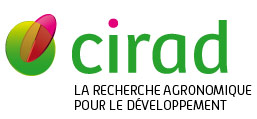Adaptation of Agro-IBIS model for Eucalyptus carbon budget estimation at regional level- a case study in Sao Paulo State, Brazil
Almeida Colmanetti M.A., Vianna Cuadra S., Attia A., Nouvellon Y., Guillemot J., Campoe O., Cabral O.M.R., Laclau J.P., Galdos M., Camargo Lamparelli R.A., Bortolucci J., Pereira B., Le Maire G.. 2019. Pesquisa Florestal Brasileira, 39 : p. 255-256. IUFRO World Congress 2019 "Forest Research and Cooperation for Sustainable Development". 25, 2019-09-29/2019-10-05, Curitiba (Brûˋsil).
Highly productive fast-growing Eucalyptus plantations cover more than 5 million hectares in Brazil and exhibit very dynamic carbon fluxes throughout their 6-7 year rotations. These plantations quickly shift from C sources at the beginning of the rotation to large C sinks until harvest. In order to get a model simulating carbon pool and fluxes for both Eucalyptus plantations and other crops, we integrated several sub-models of the Eucalyptus-dedicated Generic Decomposition And Yield Model (G'DAY) into the large scale and multi-cover model Agro-IBIS (Integrated Biosphere Simulator). The G'DAY model was previously parametrized and validated using large experimental datasets obtained in commercial eucalypt plantations in the state of Sao Paulo. Implementing an Eucalyptus plantation cover type within AgroIBIS. which had no Plant Functional Type dedicated to fast-growing forest plantations, required important changes in the carbon allocation turnover sub-models. This study included three phases: (1) the computational modification of AgrolBIS; (2) the model parametrization, calibration and validation using data from intensively monitored sites or inventories datasets; and (3) model application at regional scale using sets of parameters which were considered to be constant in space and/or time based on data from the local experiments, and other sets of parameters which could vary spatially. Carbon fluxes of Eucalyptus plantations were simulated at the regional scale, and their inter-annual and spatial variabilities were analysed. Such spatial and multiannual quantification of carbon fluxes at large scales brings a better understanding of these forest ecosystems on global carbon cycling, which is a prerequisite to support policy decisions.
Mots-clûˋs : eucalyptus; plantation forestiû´re; cycle du carbone; sûˋquestration du carbone; ûˋcosystû´me forestier; politique forestiû´re; brûˋsil
Documents associûˋs
Article (b-revue û comitûˋ de lecture)
Agents Cirad, auteurs de cette publication :
- Guillemot Joannû´s — Persyst / UMR Eco&Sols
- Laclau Jean-Paul — Dgdrs / Dgdrs
- Le Maire Guerric — Persyst / UMR Eco&Sols
- Nouvellon Yann — Persyst / UMR Eco&Sols
